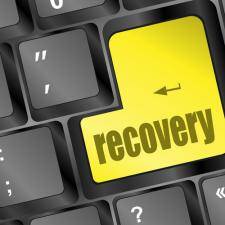When considering business continuity and disaster recovery options, there’s really only one constant from business to business: it’s important to have a plan. No matter how small or large your business, if something happens and there isn’t a plan, your company may never be able to get back on its feet again.
When considering business continuity and disaster recovery options, there’s really only one constant from business to business: it’s important to have a plan. No matter how small or large your business, if something happens and there isn’t a plan, your company may never be able to get back on its feet again.
 But where do you start?
But where do you start?
Map out your needs
Steve Aiello mentioned in his webinar series that the best starting point is to find out where the sources of income are for your business. He proposes that the best way to do this is to map out your company’s departments, dependencies, and processes first. This is going to give you a clear and concise idea of where the effect will fall, depending on different causes. It’s also a good time for a company to take stock of their processes, to ensure you’re running everything as efficiently as possible within your framework. Within the planning, you’ll also want to find out what aspects of your business are most time sensitive to have up and running.
Look at your options
When you’re thinking about IT disaster recovery specifically, there are lots of facets that your company may need. For instance, in the event that your company is situated in a location with a high incidence of natural disasters (the east coast gets bombarded with hurricanes, California has their earthquakes, and don’t get me started on tornado alley…), it would do you well to have an offsite backup that’s farther away from your site. That way if one location goes down, the other can take the load and keep your company up and running while you clean up.
Another great aspect to look at when considering the location of your backup, is cost. Putting backup data in a location with cooler temperatures means not having to rely on powered heating for as much of the year. That can really help when your disaster recovery budget is tight. Another money saving option is placing your disaster recovery solution in the cloud. Not only can you spin up servers much faster than a more traditional IT infrastructure, but it allows the flexibility of only paying for the bandwidth and power that’s necessary. This way you don’t have to pay for resources you aren’t going to use, or find yourself stuck without the power you sorely need (especially in a crisis situation).
Consider outsourcing
Even with your data center in-house, outsourcing your disaster recovery solution can be helpful in many ways. Instead of having to shoulder the burden of managing your offsite backup, a hosting provider can provide the facility that will be way more cost-effective and less time intensive.
Having staff from a hosting provider manage your services can also mean not having to spend the time and resources training your own IT staff. Not to mention, in a disaster situation there are likely to be many different things your staff is going to be concerned with – taking a thing or two off their plate when it really counts can mean a little less sleep lost for you and them (and I can’t think of anything more important than that).






